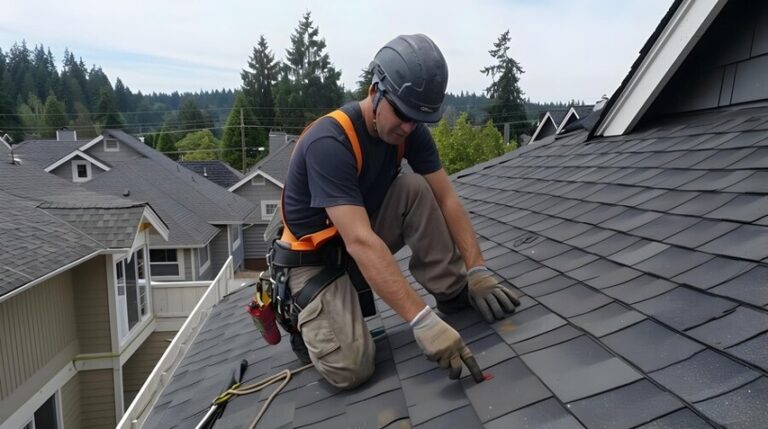Selecting the right roofing system for a commercial property is a critical decision that can impact everything from aesthetics to energy efficiency. With various options available, understanding the strengths and weaknesses of each type will empower property owners to make informed choices. This article explores different commercial roofing systems, their unique characteristics, and considerations for choosing the best fit for your needs.
Types of Commercial Roofing Systems
Commercial roofs come in several distinct types, each designed to meet specific requirements. The primary categories include flat roofs, low-slope roofs, and steep-slope roofs. Within these categories are various materials and systems, creating a diverse landscape of choices.
Flat Roofing Systems
Flat roofing systems are prevalent in commercial buildings due to their simplicity and affordability. They offer excellent space utilization for equipment placement and can be more accessible for maintenance.
- TPO (Thermoplastic Olefin): TPO is a single-ply roofing membrane that has gained popularity for its reflective properties and energy efficiency. It consists of a blend of polypropylene and ethylene-propylene rubber. TPO roofs are lightweight, easy to install, and suitable for both new constructions and roof replacements. One significant benefit is their ability to reflect UV rays, which can lead to lower cooling costs in warmer climates. EPDM (Ethylene Propylene Diene Monomer): EPDM is another single-ply option known for its durability and longevity. It’s particularly resistant to extreme weather conditions and UV radiation. Many property owners appreciate EPDM's ability to withstand harsh temperatures, making it ideal for areas with varied climates. Installation typically involves either ballasting or adhering the membrane directly to the substrate. Modified Bitumen: This system combines asphalt with polymer-modified compounds for added elasticity. Modified bitumen roofs often feature a granulated surface that improves durability against foot traffic and environmental elements. They can be installed using torch-applied methods or cold adhesives, providing flexibility depending on project requirements.
Low-Slope Roofing Systems
Low-slope roofs have a slight pitch but are not entirely flat. They often require specialized materials designed to handle water drainage effectively.
- PVC (Polyvinyl Chloride): PVC is another single-ply membrane known for its strength and resistance to chemical damage. Like TPO, it boasts reflective properties that enhance energy efficiency. PVC roofing installations typically involve heat-welding seams, which create a watertight seal crucial for performance longevity. Built-Up Roofing (BUR): BUR systems consist of multiple layers of asphalt or tar combined with reinforcing fabrics. This layered approach provides excellent waterproofing capabilities but can be heavy compared to other systems. BUR is favored in scenarios requiring exceptional durability but may demand more intensive installation processes.
Steep-Slope Roofing Systems
Steep-slope roofs are characterized by their pitched structure, allowing efficient water runoff. They generally utilize different materials than flat or low-slope options.
- Asphalt Shingles: Asphalt shingles remain one of the most common steep-slope roofing materials due to their affordability and ease of installation. They come in various styles and colors, allowing customization based on aesthetic preferences. However, they may not last as long as other options under severe weather conditions unless adequately maintained. Metal Roofing: Increasingly popular among commercial buildings, metal roofing offers exceptional durability and longevity compared to traditional options like asphalt shingles or tiles. It can withstand extreme weather conditions while providing energy efficiency through its reflective properties. Metal roofs also come in a variety of styles such as standing seam or corrugated panels. Slate Tiles: Slate tiles provide an elegant appearance alongside impressive durability; however, they tend to be heavier than other materials requiring additional structural support during installation. Their lifespan can extend well beyond fifty years when properly maintained.
Considerations When Choosing a Commercial Roof
When selecting a commercial roofing system, several factors should influence your decision-making process:
Climate: The local climate plays an important role in determining which material will perform best over time. Budget: Assessing upfront costs versus long-term value helps ensure you invest wisely. Building Design: The architectural style may limit your material options or influence aesthetics. Maintenance Requirements: Understanding how often certain systems need upkeep will affect your long-term investment strategy. Energy Efficiency: Opting for reflective materials can reduce cooling costs significantly during peak summer months.The Role of Professional Installation
Choosing the right material is only part of the equation; professional installation is critical for ensuring optimal performance from your chosen roofing system. Engaging experienced contractors who understand each type's nuances minimizes risks associated with improper installation techniques that could lead to premature failures.

For those searching specifically within New Jersey's market—particularly if you’re seeking out a reliable Roofing Company In Garfield NJ—it’s essential to research local contractors with solid reputations in both residential and commercial sectors alike.
Long-Term Benefits of Proper Maintenance
Investing in any commercial roofing system requires ongoing maintenance support tailored specifically toward preserving its integrity over time—a proactive approach ensures maximum lifespan while minimizing costly repairs later down the line.
Regular inspections are vital; they allow early detection of potential issues like leaks or wear-and-tear before escalating into larger problems requiring significant investment resources down the road.
Consider setting up an annual contract with trusted professionals—like those at Royal-Roofing & Exteriors—to stay ahead on preventative measures across all areas impacting your roof's health throughout varying seasons experienced here in New Jersey!
Conclusion
Understanding the different types of commercial roofing systems available is essential for property owners seeking quality solutions tailored specifically towards their unique needs—whether it’s optimizing energy efficiency levels through effective designs or selecting materials positioned perfectly against regional climate challenges faced daily across New Jersey’s landscape!
By carefully considering individual Roof Replacement Near Me preferences alongside practicalities like budget constraints & long-term viability expectations from various product offerings available today—the path toward securing an optimal choice becomes clearer! Always remember that engaging seasoned professionals remains critical throughout this journey; they’ll help guide you through both selection processes while ensuring peace-of-mind knowing expert hands will execute installations effectively once decisions have been made accordingly!
Royal-Roofing & Exteriors
163 Midland Ave Unit C, Garfield, NJ 07026, United States
(862) 378-7739
[email protected]
Website: https://royalroofingandexteriors.com/